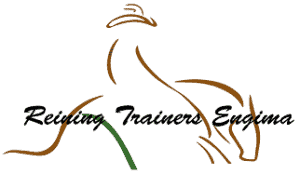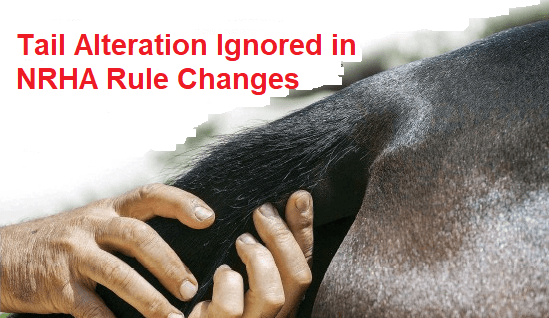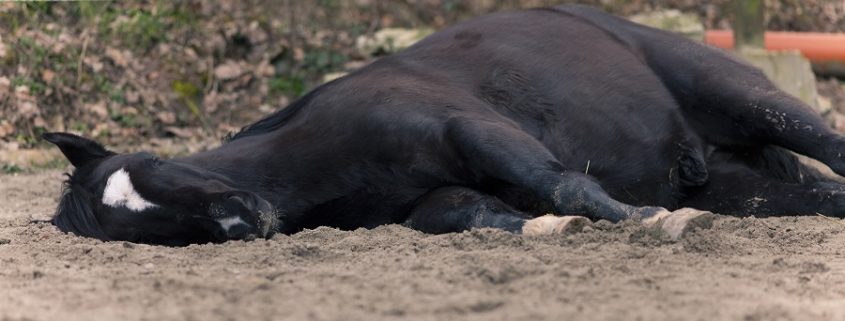Does the NRHA draw a parallel between a dead horse and free speech when revoking a membership? One man is going to find out.
Shrouded in confidentiality throughout their rules – you are now getting a rare look at what is going on behind the locked doors of the NRHA?
In the District Court of Oklahoma, reining enthusiasts are getting a firsthand behind the scenes look as a lifetime membership is revoked. Typically, revoking membership is for the most heinous of crimes like killing a horse, but one man is fighting the NRHA for what some may describe as free speech.
The man taking legal action against the NRHA is Kit Cosper, claiming that by revoking his lifetime membership, the NRHA has failed to comply with its own Disciplinary Procedures of the NRHA’s 2012 General Rules and Regulations. According to the lawsuit, the letter [click here to read the actual letter] did not state any reasons or allege any misconduct as the basis for his membership revocation.
Who is Kit Cosper
Cosper, the son of Monica Watson of Double Run Farm, who breed the famous NRHA Hall of Fame and $9 million reining sire, Wimpys Little Step. He is a life member of the NRHA since 1999, and has served the NRHA in several different significant capacities, including but not limited to: (a) member of the NRHA’s Executive Committee, (b) Vice President of the Reining Horse Sports Foundation and (c) a member of the NRHA Bylaw committee. Since 2013, Cosper operates the FaceBook page ‘Take back the NRHA’ which is a closed group for reining enthusiasts for the discussion of By-Laws, Rules, and Policy. This group exists for the open, frank discussion of these issues. Matters that are important to members.
In the NRHA’s response to his claim, among many points they state:

The point goes on to cite a Facebook post. To read the full court document response and their assertions, please <<<<click here>>>>.
The NRHA has failed in their bid to have the matter thrown out. The matter is before the courts, and you can read all courts documents by <<<<clicking here>>>>. Everyone will be watching to see the outcome of this case.
In a society where giving opinions, vigorous debate and opposing opinions have become the norm through social media, why did the NRHA take action against a member? Who else has fallen victim to the same fate but did not have the experience to stand up and fight?
Who else has been suspended or revoked but is hidden from the membership?
Interestingly, Cosper’s membership was revoked in May 2016, but that fact never appeared in the Reiner Magazine Disciplinary List. It raises the question of how many others members have been revoked or suspended, but the information kept a secret? How many trainers are suspended but no one ever learns about it as it’s all kept confidential. Imagine your horse is with a multiple-time offender and you have no knowledge of it! The board of directors has the right to elect whether they will publish the information. It’s not a compulsory list.
What are your thoughts? By taking this action are the NRHA fundamentally saying that you cannot have an opinion or discuss issues about the NRHA if they do not agree with the NRHA, its staff, and the NRHA Executive Committee? What are they inferring with this claim defence? Do you agree there needs to be increased transparency and stop the secret society of a member-owned organization.
Are the secret society By-Laws and Rules unique to the NRHA?
Delving deeper into the By-Laws and Rules and Regulations you can find some interesting points that you will not find in the NCHA (National Cutting Horse Association) and AQHA (American Quarter Horse Association), two of the related entities grounded in the showing and breeding of performance quarter horses. The NRHA is the smallest general membership group of around 12,600 members worldwide.
The NRHA references numerous times “Confidential.” You will find it under Section 5. Investigation Review Committee points 9 and 12. Section 6. Hearing Body point 12. It appears four times in their handbook. Whereas, a quick scan of the NCHA Handbook and AQHA Handbook and the word does not exist.
Correspondence produced by NRHA to members and non-members references “Confidential statements” – how far and wide that is used is till being uncovered.
What is so confidential at the NRHA? Why do other similar associations not need to be reliant on such clauses?
Is it a case of ‘dictated to completely’?
To remain a member of the NRHA is a vital part of breeding, owning and showing reiners. To lose a membership can be devastating to a person that has invested time, money and passion into the sport. But how risky is that investment when it comes to retaining your membership?
The By-Laws, it states “Membership is a privilege and not a vested right. All memberships are subject to the approval of the Executive Committee, which may approve, reject, suspend, or revoke the membership of any Member at any time at its discretion. The Board of Directors retains final authority regarding all aspects of membership, including conditions of membership, eligibility, qualifications, approval or rejection, suspension, revocation, processes, types, dues, and interpretations of the provisions of these Bylaws relating to membership, and the decision of the Board of Directors shall be final and not subject to appeal or review.”
Looking at the Cosper case and reading the rules, could this be the reason why we see comments on FaceBook of ‘I am no longer a member so I can say……’.
With increased transparency, much of the conjecture can be removed as people will be informed of what is really happening behind the scenes of the NRHA.
Share your thoughts and please be respectful of each other’s opinions.
We are Polling for Change at the NRHA for more transparency. Click here to vote. Voting Now Closed
The revoked membership for a dead horse is Mark Arballo. <<<<Read the story here>>>>
© 2017 ReiningTrainers.com All Rights Reserved.





